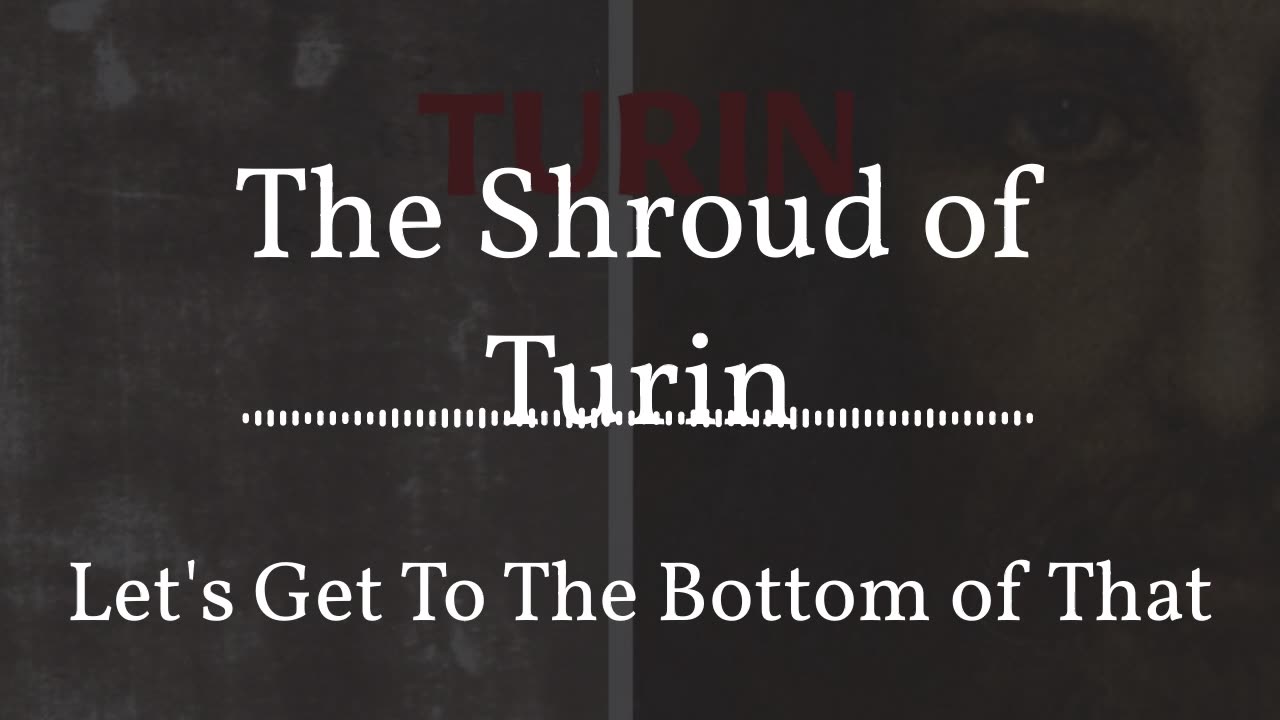Premium Only Content

The Shroud of Turin
The Shroud of Turin, a centuries-old linen cloth believed by many to be the burial shroud of Jesus of Nazareth, has long been a subject of fascination, debate, and controversy. On today's we will delve into the historical, scientific, and theological dimensions of the Shroud, examining its origins, characteristics, and the ongoing discourse surrounding its authenticity. By exploring a variety of perspectives, this paper aims to provide a comprehensive overview of the Shroud of Turin and contribute to the understanding of its significance in religious and scientific contexts.The Shroud of Turin - is a centuries-old linen cloth that bears the image of a crucified man, a man that millions believe to be Jesus of Nazareth. It is one of the most studied and controversial artifacts in human history.
Description and Image: The Shroud is a rectangular cloth, measuring approximately 4.4 x 1.1 meters. It contains the faint, brownish image of the front and back view of a naked man with his hands folded across his groin. The man is depicted with beard, mustache, and shoulder-length hair parted in the middle. He is muscular and tall (about 5 ft. 7 in. to 6 ft. 7 in. in height). The image is more visible in black-and-white negative than in its natural sepia color. The negative image was first observed in 1898 on the reverse photographic plate of amateur photographer Secondo Pia, who was allowed to photograph it while it was being exhibited in the Turin Cathedral.
-
 1:20:30
1:20:30
Lets Get To The Bottom of That
1 month agoThe Cult Series: NXIVM | The Sex Cult
862 -
 1:03:45
1:03:45
Donald Trump Jr.
19 hours agoHappy Festivus: Airing Our Grievances and Stopping The Swamp w/Sean Davis | TRIGGERED Ep.201
285K296 -
 1:58:10
1:58:10
Robert Gouveia
16 hours agoMatt Gaetz REJECTS Report, Sues Committee; Luigi Fan Club Arrives; Biden Commutes; Festivus Waste
206K141 -
 58:10
58:10
Kimberly Guilfoyle
18 hours agoAmerica is Back & The Future is Bright: A Year in Review | Ep. 183
110K62 -
 3:03:27
3:03:27
vivafrei
23 hours agoEp. 242: Barnes is BACK AGAIN! Trump, Fani, J6, RFK, Chip Roy, USS Liberty AND MORE! Viva & Barnes
202K209 -
 8:09:50
8:09:50
Dr Disrespect
21 hours ago🔴LIVE - DR DISRESPECT - MARVEL RIVALS - GOLD VANGUARD
211K34 -
 1:15:00
1:15:00
Awaken With JP
20 hours agoMerry Christmas NOT Happy Holidays! Special - LIES Ep 71
272K220 -
 1:42:21
1:42:21
The Quartering
22 hours agoTrump To INVADE Mexico, Take Back Panama Canal Too! NYC Human Torch & Matt Gaetz Report Drops!
199K116 -
 2:23:15
2:23:15
Nerdrotic
21 hours ago $15.98 earnedA Very Merry Christmas | FNT Square Up - Nerdrotic Nooner 453
147K16 -
 1:14:05
1:14:05
Tucker Carlson
21 hours ago“I’ll Win With or Without You,” Teamsters Union President Reveals Kamala Harris’s Famous Last Words
253K394